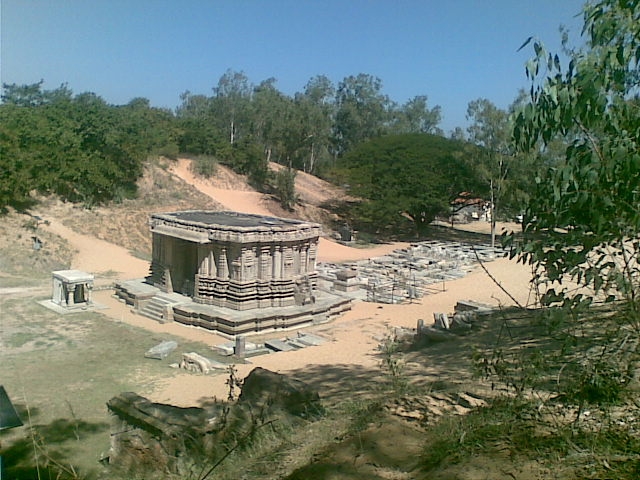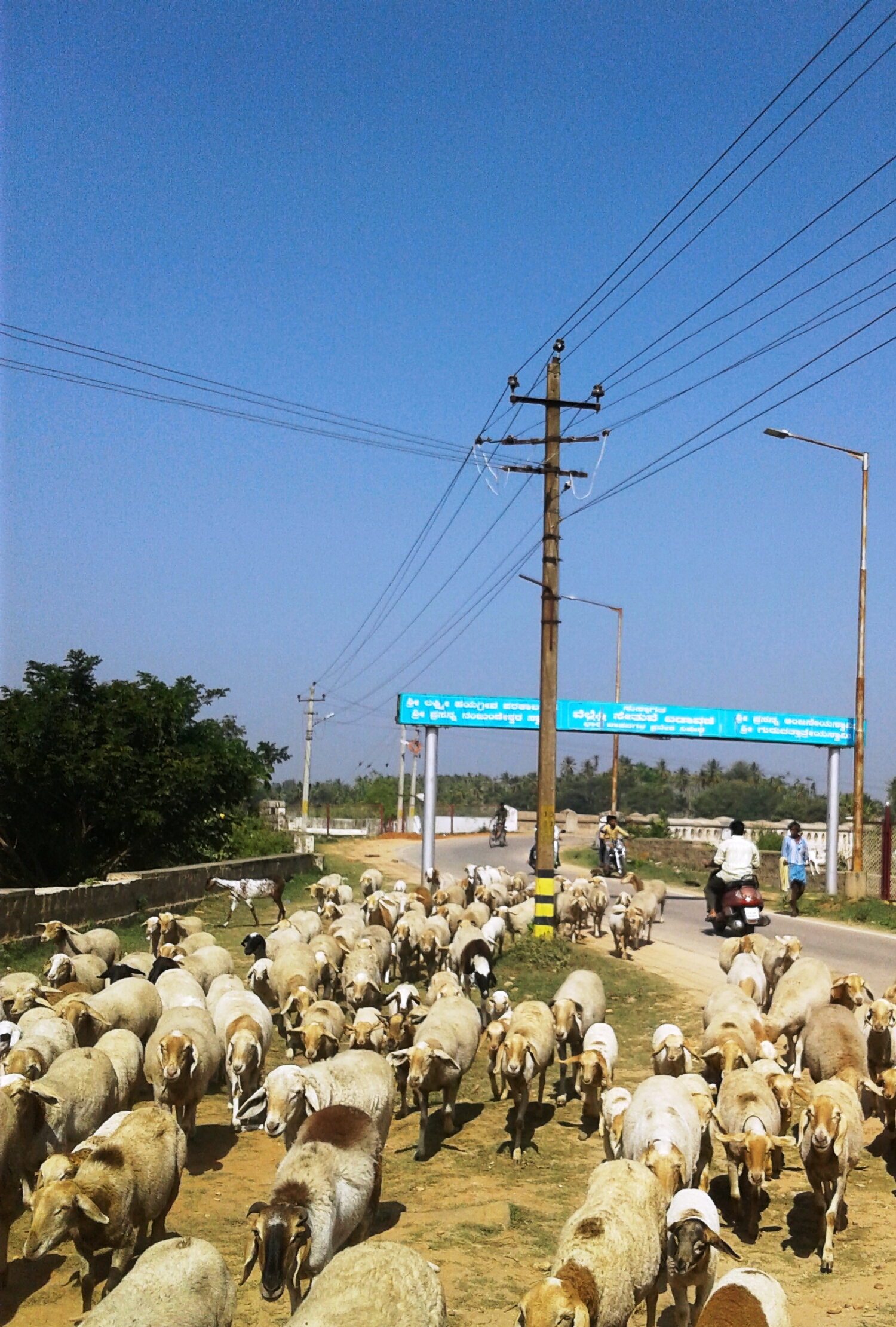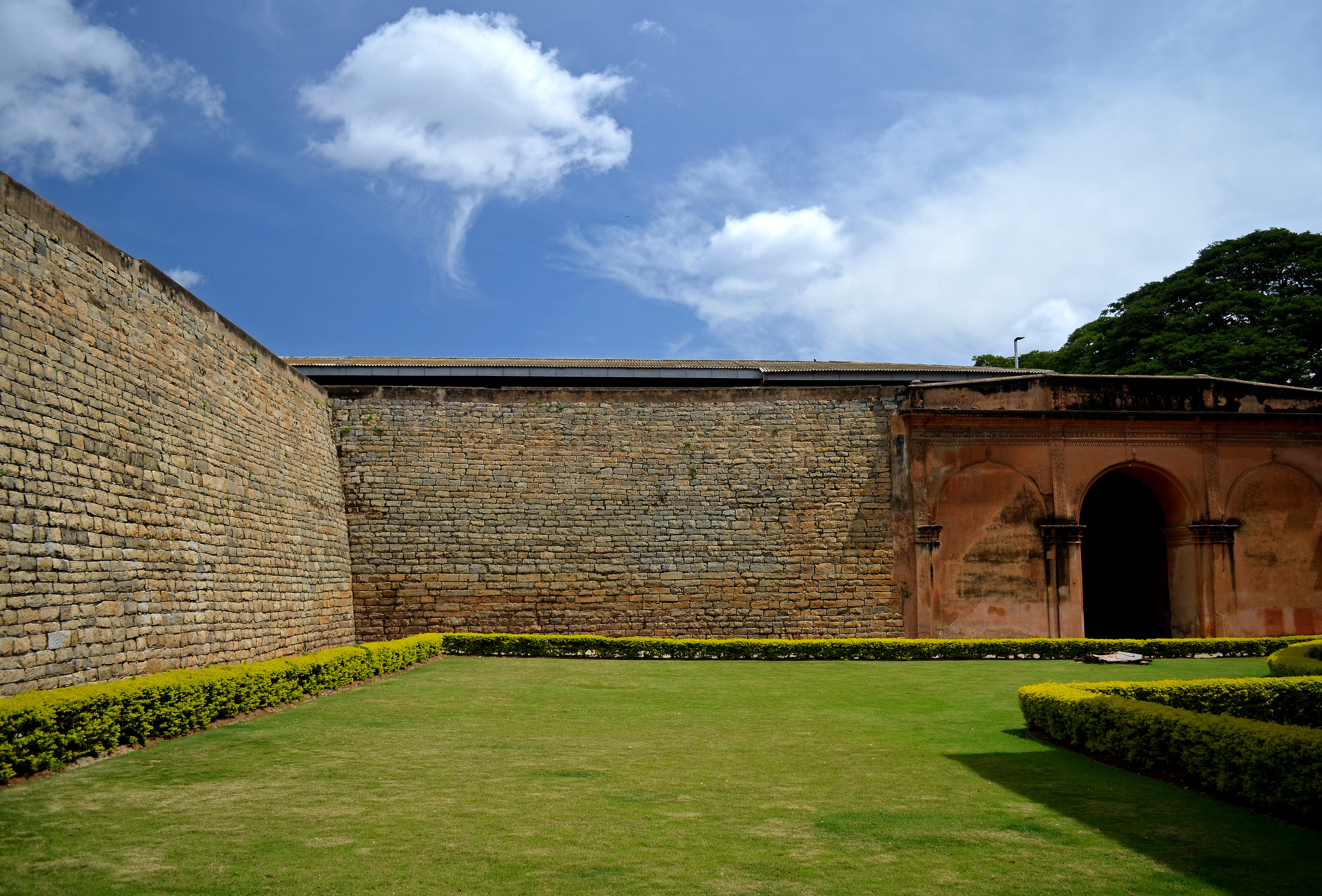|
Chamaraja Wodeyar IV
Chamaraja Wodeyar IV (25 July 1507 – 9 November 1576) was the seventh maharaja of the Kingdom of Mysore. He was youngest son of Chamaraja Wodeyar III, the fifth raja of Mysore. He took over the kingdom at the age of 65 after his older brother's death in 1572 and ruled for four years until 1576. As king He was struck by a lightning and was reduced to baldness, thereafter nicknamed ''Bola'' (the bald). In 1572, he succeeded on the death of his elder brother Timmaraja Wodeyar II. Although Timmaraja Wodeyar II had declared Mysore Kingdom independent of the Vijayanagara Empire, it was not ratified. Chamaraja Wodeyar IV strongly opposed Vijayanagara. He immediately expelled the Vijayanagar envoys and revenue collectors from Mysore Kingdom. Although he had to retain a small delegation of Vijayanagara in Srirangapattana, he had all other traces of Vijayanagara high command removed throughout his kingdom. Major acquisition: Bangalore town Kempe Gowda I had built a town out of an ... [...More Info...] [...Related Items...] OR: [Wikipedia] [Google] [Baidu] |
Maharaja Of Mysore
The maharaja of Mysore was the king and principal ruler of the southern Indian Kingdom of Mysore and briefly of Mysore State in the Indian Dominion roughly between the mid- to late-1300s and 1950. In title, the role has been known by different names over time, from ''poleygar'' (Kannada, ''pāLegāra'', for 'chieftain') during the early days of the fiefdom to ''raja'' (Sanskrit and Kannada, king–of especially a small region) during its early days as a kingdom to ''maharaja'' (Sanskrit and Kannada, reatking–of a formidable kingdom) for the rest of its period. In terms of succession, the successor was either a hereditary inheritor or, in case of no issue, handpicked by the reigning monarch or his privy council. All rulers under the Sanskrit-Kannada titles of ''raja'' or ''maharaja'' were exclusively from the house of Wadiyar. As India gained Independence from British Crown in 1947, Crown allies, most of which were princely India, ceded into the Dominion of India by 1950. ... [...More Info...] [...Related Items...] OR: [Wikipedia] [Google] [Baidu] |
Timmaraja Wodeyar II
Timmaraja Wodeyar II (? – 1572), was the sixth maharaja of the Kingdom of Mysore, who ruled between 7 February 1553 and 1572. He was eldest son of Chamaraja Wodeyar III, the fifth raja of Mysore. On 17 February 1553, he succeeded on the death of his father. Thimmaraja Wodeyar II was the first 'maharaja' to rule as absolute monarch and denounce Mysore Kingdom's vassalage to the Vijayanagara Empire. Declaration of independence from Vijayanagara Right in his father's days, Thimmaraja Wodeyar II had learnt the lineage of the royal families in Vijayanagara. Both his father and his brother, including himself, had begun to question the legitimacy of the Tuluva family. Before his father could take a stand against feudalism, he died. However, right after coming to power in 1553, he formally declared independence of the Kingdom of Mysore from the Vijayanagara Empire. In Vijayanagara, though, Rama Raya was in power, trying to hold together the falling pieces of the empire. But, disin ... [...More Info...] [...Related Items...] OR: [Wikipedia] [Google] [Baidu] |
Chamaraja Wodeyar V
Chamaraja Wodeyar V was the eighth maharaja of the Kingdom of Mysore, who reigned only for two years between 1576 after his uncle's death and 1578 until his demise. Ascension to throne and immediate death After his paternal uncle Chamaraja Wodeyar IV's death, Chamaraja Wodeyar V took over, but died in two years' time on the throne. In span of less than a decade, three monarchs had died, his being the most recent. His father died in 1572, later his paternal uncle in 1576, and now himself in 1578. A stable king was necessary for the perpetuity of Mysore Kingdom. These short-span kings and deaths was a repetition of Vijayanaga's past. Further, Vijayanagara Empire was itself in the ruins, rampaged by the Bahamani and Deccan sultans. Sriranga I, during Chamaraja Wodeyar's time, carried the restoration of the Vijayanagara empire, but his reign was marred with repeated attacks and loss of territories from his Muslim neighbours. Now, Chamaraja's death caused more concern among Mysore ... [...More Info...] [...Related Items...] OR: [Wikipedia] [Google] [Baidu] |
Wodeyar
The Wadiyar dynasty (formerly spelt Wodeyer or Odeyer, also referred to as the Wadiyars of Mysore), is a late-medieval/ early-modern South Indian Hindu royal family of former kings of Mysore from the Urs clan originally based in Mysore city. As Maharajas of Mysore, the Wadiyars ruled the Kingdom of Mysore from the late 1300s until 1950. Members of the Wadiyar dynasty and the Urs clan have also been royal advisers as Diwans to their reigning siblings, cousins, nephews, or distant relatives. Some members have also commanded army divisions as ''dalvoys'' (commander-in-chief) for their reigning monarch. During the late 14th century, the family was originally ''poleygars'' (Kannada for garrison) defending the regions in and around Mysore town for the Vijayanagara Empire, their feudal overlords. With the fall and decline of the empire in the 17th century, the Wadiyars declared independence when Raja Wadiyar seized the nearby town of Srirangapattana, the seat of Tirumala, Srir ... [...More Info...] [...Related Items...] OR: [Wikipedia] [Google] [Baidu] |
Chamaraja Wodeyar III
Chamaraja Wodeyar III (29 September 1492 – 17 February 1553) was fifth raja of the Kingdom of Mysore and the last one to rule as feudal king under the Vijayanagara Empire. He reigned after his father's demise in 1513 until his death in 1553. Reign under Krishnadevaraya Chamaraja Wodeyar III ruled under four Vijayanagara emperors of the Tuluva dynasty. He began his kingship under Emperor Krishnadevaraya. Krishnadevaraya's ''rajaguru'' was Sri Vyasatirtha, a Mysore-born ''guru'' and philosopher. Further, the growing rebel against Vijayanagara was suspended by Chamaraja Wodeyar III's father, Chamaraja Wodeyar II in order to understand Krishnadevaraya first. Krishnadevaraya proved to be an extremely efficient ruler. He was inordinately knowledgeable. His reign focussed on all aspects of livelihood: arts and literature, culture, politics and business, and whatnot. Besides, his rule was justified by its benevolence, and hence none under him rose against him. He also defeated Yu ... [...More Info...] [...Related Items...] OR: [Wikipedia] [Google] [Baidu] |
Raja Wodeyar I
Raja Wodeyar I (2 June 1552 – 20 June 1617) was ninth maharaja of the Kingdom of Mysore. He was eldest son of Chamaraja Wodeyar IV, the seventh maharaja of Mysore. He ruled from 1578, after his cousin Chamaraja Wodeyar V's death, until his death in 1617. Expelling Vijayanagara envoys Raja Wodeyar I furthered his father's expelling the Vijayanagara ambassadors and envoys. During Sriranga II, who himself faced riots from within his family, Raja Wodeyar removed all Vijayanagara emissaries from the Kingdom, except one in Srirangapattana. Although the kingdom declared independence from Vijayanagara and removed its representatives, Mysore Kingdom continued to recognise the empire and the emperor. Mysore Dasara His procession from the Palace to the Banni tree in present-day Bannimantap came to be famous after each Mysore king, which, today, has taken the form of the world-famous Mysore Dasara. Raja Wadiyar is credited with starting the famous Mysore Dasara in 1610 to commemo ... [...More Info...] [...Related Items...] OR: [Wikipedia] [Google] [Baidu] |
Maharaja
Mahārāja (; also spelled Maharajah, Maharaj) is a Sanskrit title for a "great ruler", "great king" or " high king". A few ruled states informally called empires, including ruler raja Sri Gupta, founder of the ancient Indian Gupta Empire, and Chandragupta Maurya. 'Title inflation' soon led to most being rather mediocre or even petty in real power, which led to compound titles (among other efforts) being used in an attempt to distinguish some among their ranks. The female equivalent, Maharani (or Maharanee, Mahārājñī, Maharajin), denotes either the wife of a Maharaja (or Maharana etc.) or also, in states where it was customary, a woman ruling without a husband. The widow of a Maharaja is known as a Rajmata, "queen mother". Maharajakumar generally denotes a son of a Maharaja, but more specific titulatures are often used at each court, including Yuvaraja for the heir (the crown prince). The form "Maharaj" (without "-a") indicates a separation of noble and religious office ... [...More Info...] [...Related Items...] OR: [Wikipedia] [Google] [Baidu] |
Kingdom Of Mysore
The Kingdom of Mysore was a realm in South India, southern India, traditionally believed to have been founded in 1399 in the vicinity of the modern city of Mysore. From 1799 until 1950, it was a princely state, until 1947 in a subsidiary alliance with Presidencies and provinces of British India, British India. The British took Direct Control over the Princely state, Princely State in 1831.Rajakaryaprasakta Rao Bahadur (1936), p383 It then became Mysore State (later enlarged and renamed to Karnataka) with its ruler remaining as Rajapramukh until 1956, when he became the first Governor of the reformed state. The kingdom, which was founded and ruled for most part by the Hindu Wodeyar family, initially served as feudatories under the Vijayanagara Empire. The 17th century saw a steady expansion of its territory and during the rule of Kanthirava Narasaraja I, Narasaraja Wodeyar I and Chikka Devaraja, Chikka Devaraja Wodeyar, the kingdom annexed large expanses of what is now southern ... [...More Info...] [...Related Items...] OR: [Wikipedia] [Google] [Baidu] |
Srirangapatna
Srirangapatna is a town and headquarters of one of the seven Tehsil, Taluks of Mandya district, in the Indian States and territories of India, State of Karnataka. It gets its name from the Ranganathaswamy Temple, Srirangapatna, Ranganthaswamy temple consecrated at around 984 CE. Later, under the British rule the city was renamed to Seringapatnam. Located near the city of Mandya, it is of religious, cultural and historic importance. The monuments on the island town of Srirangapatna have been nominated as a UNESCO World Heritage Site, and the application is pending on the tentative list of UNESCO. History Srirangapatna has since time immemorial been an urban center and place of pilgrimage. During the Vijayanagar empire, it became the seat of a major viceroyalty, from where several nearby vassal states of the empire, such as Mysore and Talakad, were overseen. When perceiving the decline of the Vijayanagar empire, the rulers of Mysore ventured to assert independence, Srirangapatn ... [...More Info...] [...Related Items...] OR: [Wikipedia] [Google] [Baidu] |
Kempe Gowda I
Kempe Gowda I, locally venerated as Nadaprabhu Kempe Gowda, or commonly known as Kempe Gowda, was a chieftain under the Vijayanagara Empire in early-modern India. He is famous for founding the present-day southern Indian city of Bangalore. Early life Kempe Gowda was born in the Yelahanka suburb of Bangalore in the Morasu Vokkaliga community to Kempananje Gowda, the ruler of Yelhanka for more than 70 years. The Morasu Vokkaligas were Vijayanagara vassals at Yelahanka and belonged to the Gowda community. The community is said to have moved from Kanchi, Tamil Nadu, to Karnataka in the early fifteenth century and served under the Vijayanagara Empire. However, according to other sources, they were originally from Karnataka and were a Kannada-speaking community, although well-versed in Telugu. Kempe Gowda, who is reputed to have shown leadership skills during his childhood, was educated for nine years at a gurukula in Aivarukandapura (or Aigondapura), a village near Hesaraghatt ... [...More Info...] [...Related Items...] OR: [Wikipedia] [Google] [Baidu] |
Bengaluru Pete
Bengaluru Pete is the area of Bangalore city which was established by Kempegowda I (c. 1510–1570) in 1537 with roads laid out in the cardinal directions, and entrance gates at the end of each road. Kempegowda also termed the Pete he built as his "gandu bhoomi" or "Land of Heroes". Pete (Kannada: Market centre) forms a well–defined body of markets which were associated with various trades and professions of the populace in the locality markets and given the names of trades pursued in such markets. The well known markets are the Tharagupete–market for grains, the Balepete – for Bangles and musical instruments, the Chikkapete and the Nagarthpete for textile trade, the Ballapurpete and the Ganigarapete market where oil is extracted by people of the Ganiga community, the Tigalarapete–flower market of gardeners, the Cubbonpete – textile manufacture by people of the Devanga community. The Bengaluru Pete, established in 1537 around the Mud Fort, built by Kempe Gowda I as the ... [...More Info...] [...Related Items...] OR: [Wikipedia] [Google] [Baidu] |
Wodeyar Dynasty
The Wadiyar dynasty (formerly spelt Wodeyer or Odeyer, also referred to as the Wadiyars of Mysore), is a late-medieval/ early-modern South Indian Hindu royal family of former kings of Mysore from the Urs clan originally based in Mysore city. As Maharajas of Mysore, the Wadiyars ruled the Kingdom of Mysore from the late 1300s until 1950. Members of the Wadiyar dynasty and the Urs clan have also been royal advisers as Diwans to their reigning siblings, cousins, nephews, or distant relatives. Some members have also commanded army divisions as ''dalvoys'' (commander-in-chief) for their reigning monarch. During the late 14th century, the family was originally ''poleygars'' (Kannada for garrison) defending the regions in and around Mysore town for the Vijayanagara Empire, their feudal overlords. With the fall and decline of the empire in the 17th century, the Wadiyars declared independence when Raja Wadiyar seized the nearby town of Srirangapattana, the seat of Tirumala, Srir ... [...More Info...] [...Related Items...] OR: [Wikipedia] [Google] [Baidu] |





